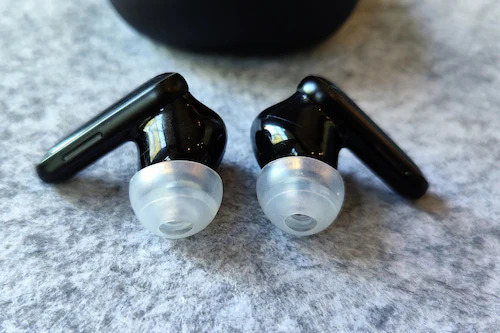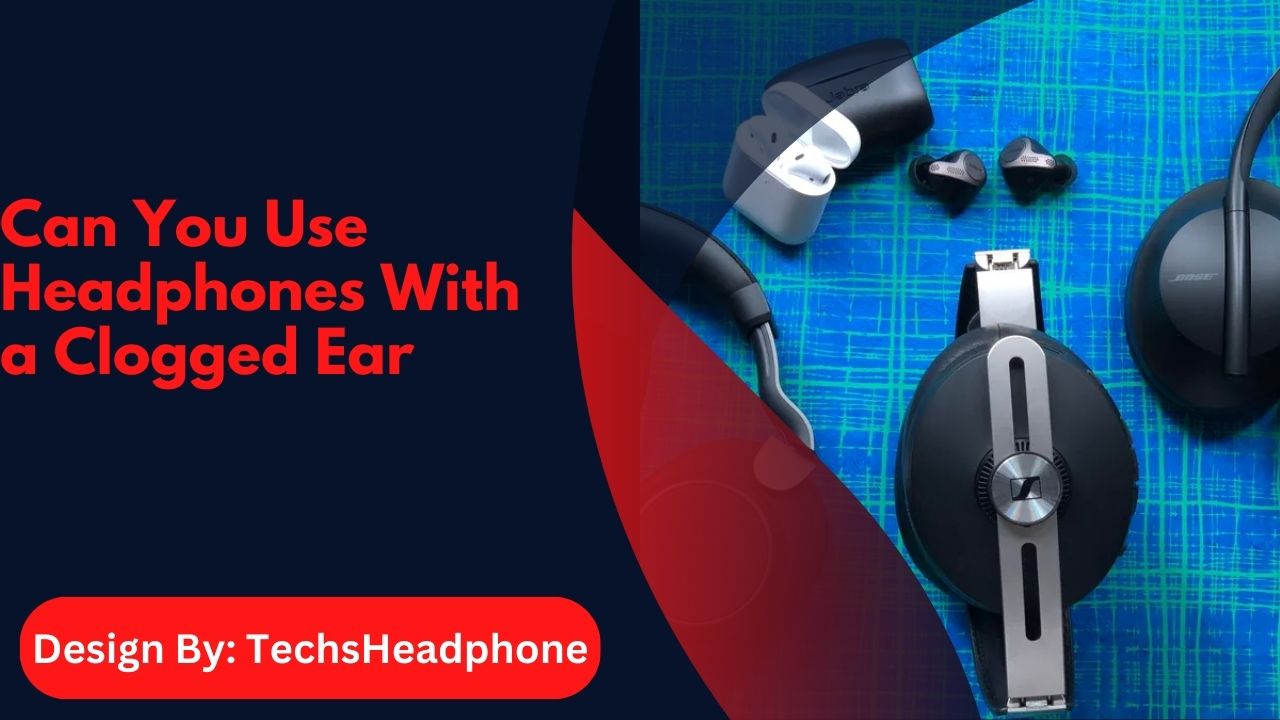Headphones and earbuds can contribute to vertigo if used improperly. Risks can be minimized by taking regular breaks, using lower volumes, and choosing well-fitting, high-quality devices.
Headphones don’t directly cause vertigo, but they can sometimes make you feel dizzy. Listening at very high volumes might lead to discomfort or imbalance. If the headphones don’t fit well, they could cause pressure around your ears. To avoid this, keep the volume at a comfortable level and take breaks.
Headphones and earbuds are integral to modern life, used for everything from listening to music to taking calls. However, some people wonder if these devices might cause vertigo. This article explores the relationship between headphones and vertigo, offering insights into what vertigo is, its symptoms, and how to mitigate any associated risks. We’ll discuss practical steps you can take to prevent vertigo and ensure a safe and enjoyable listening experience.
What is Vertigo:
Vertigo is a type of dizziness that makes you feel as though you or your surroundings are spinning or moving, even when you’re stationary. It’s not the same as regular dizziness, as it involves a false sense of motion.
This sensation can significantly impact your balance and coordination. Vertigo is often linked to inner ear issues or problems in the brain. It can interfere with daily activities and quality of life, making it essential to understand and manage this condition effectively.
What Are The Symptoms Of Vertigo:

Common symptoms of vertigo include a spinning sensation, where you feel as if you or your surroundings are moving. Balance problems can make you feel unsteady, increasing the risk of falls.
Nausea is another common symptom, which can be severe enough to lead to vomiting. Tinnitus, or ringing in the ears, often accompanies vertigo. Headaches may also occur, usually in combination with dizziness and nausea. The severity and duration of these symptoms can vary, and they may come and go or be persistent.
Reducing the Risk of Vertigo When Wearing Headphones:
To minimize the risk of vertigo when using headphones, consider taking regular breaks. Avoid wearing them for extended periods; a good practice is to take a 5-10 minute break every hour. Keep the volume at a moderate level to prevent hearing damage, which can contribute to vertigo.
Over-ear headphones might be a better choice as they typically apply less pressure to the ear canal compared to in-ear models. Staying hydrated can also support ear health and help prevent balance issues related to vertigo.
Types of Vertigo:
Vertigo can be categorized into several types. Peripheral vertigo originates from problems in the inner ear or vestibular nerve, with conditions such as Benign Paroxysmal Positional Vertigo (BPPV) or Meniere’s disease being common causes.
Central vertigo, on the other hand, is caused by issues in the brain, including migraines or strokes. Positional vertigo is triggered by changes in head position and is often related to BPPV. Understanding the type of vertigo can help in managing and treating the condition effectively.
What Are The Causes Of Vertigo:
Vertigo can be triggered by a variety of causes. Inner ear disorders are a primary source, including conditions like BPPV and Meniere’s disease that affect balance. Head injuries can disrupt balance and cause vertigo.
Certain medications might impact balance, leading to vertigo as a side effect. Migraines can also cause vertigo in some individuals. Identifying the underlying cause of vertigo is crucial for effective treatment and management, as different causes may require different approaches.
What Is The Connection Between Vertigo And Earbuds:
Earbuds may contribute to vertigo through several mechanisms. Extended use of earbuds can create increased ear pressure, affecting the inner ear and potentially leading to vertigo. Poorly fitting earbuds might irritate the ear canal, causing discomfort and balance issues.
Listening to music at high volumes through earbuds can damage the inner ear structures, increasing the risk of vertigo. Being aware of these connections can help in making informed choices about earbud use and minimizing associated risks.
How Do You Stop Vertigo Caused By Earbuds:
If you experience vertigo while using earbuds, the first step is to remove them immediately. This can relieve any pressure or discomfort that might be causing the sensation. Resting in a comfortable position can help alleviate vertigo symptoms.
Hydrating by drinking water might also ease the symptoms. If vertigo persists, seeking medical advice is important. A healthcare provider can evaluate your condition and provide appropriate treatment or recommendations to address and manage vertigo effectively.
Also read: Why do my Jbl Headphones keep Pausing – A Comprehensive Guide!
How to Prevent Earbud-Related Vertigo from Occurring:
Preventing vertigo related to earbuds involves several strategies. Choosing ergonomic earbuds designed for comfort and a proper fit can reduce the risk of balance issues. Using noise-canceling features can allow you to listen at lower volumes, which is better for ear health.
Regularly cleaning your earbuds helps prevent infections that could contribute to vertigo. Implementing these practices can significantly lower the risk of developing vertigo and ensure a more enjoyable and safe listening experience.
How Long Should You Use Your Wireless Earbuds To Avoid Vertigo:
To minimize the risk of vertigo:
- Limit Usage: Use your wireless earbuds for no more than 60 minutes at a stretch.
- Follow the 60/60 Rule: Keep the volume at no more than 60% and listen for a maximum of 60 minutes.
Are Some Earbuds More Likely to Cause Ear Infections Than Others:
Yes, some earbuds are more likely to cause ear infections. Earbuds made from low-quality materials may irritate the ear canal, leading to infections. Additionally, earbuds that lack proper ventilation can trap moisture and bacteria, increasing the risk of infections. To reduce this risk, choose high-quality earbuds and ensure they fit well. Regular cleaning and maintenance are also important to keep your earbuds hygienic and minimize the chances of infections.
Can Headphones or Earbuds Cause Tinnitus:

Headphones and earbuds can contribute to tinnitus, especially when used at high volumes. Prolonged exposure to loud sounds can damage the delicate structures in the ear, leading to ringing or buzzing noises. To prevent tinnitus, it’s essential to keep the volume at a moderate level and take regular breaks during use. Protecting your hearing by following these practices can help avoid tinnitus and maintain overall ear health.
What About Bluetooth Headphone Safety:
Bluetooth headphones are generally safe when used correctly. To ensure safety:
- Choose Reputable Brands: Opt for well-known brands to avoid potential quality issues.
- Follow Usage Guidelines: Adhere to recommended usage times and volume levels.
- Monitor Battery Health: Ensure the battery is in good condition to avoid safety risks.
FAQ’s:
1. Can using headphones cause vertigo?
Yes, prolonged use or high volumes can contribute to vertigo by affecting ear pressure and balance.
2. What are the main symptoms of vertigo?
Symptoms include a spinning sensation, balance problems, nausea, tinnitus, and headaches.
3. How can I prevent vertigo while using earbuds?
Take breaks, keep the volume low, and choose ergonomic earbuds that fit well.
4. Can ear infections be caused by certain earbuds?
Yes, low-quality earbuds or those without proper ventilation can increase the risk of ear infections.
5. Do Bluetooth headphones pose any safety concerns?
Generally, they are safe if used correctly, but it’s important to choose reputable brands and monitor battery health.
Conclusion:
In conclusion, headphones and earbuds can cause vertigo if used excessively or improperly. To reduce the risk, take regular breaks, keep the volume low, and choose high-quality, well-fitting devices. Understanding the link between ear health and vertigo helps in making better choices for a safer and more comfortable listening experience.



